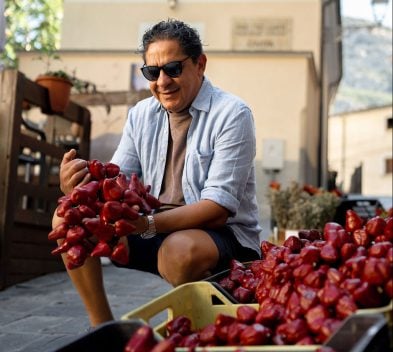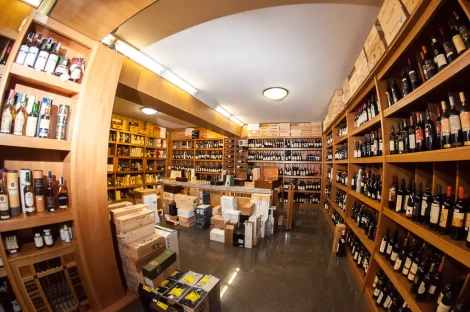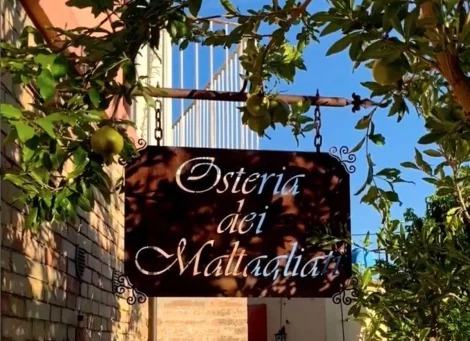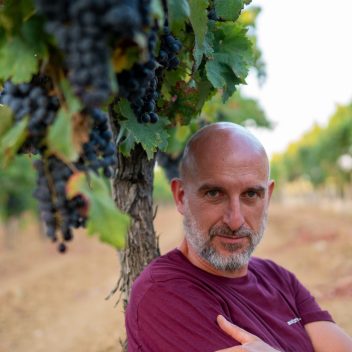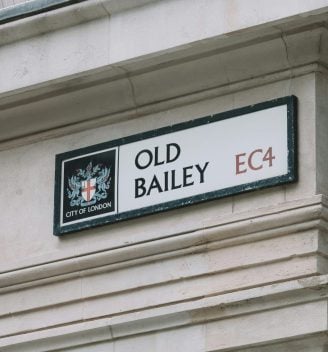by Jacopo Manni
With a decree published on 27 September 2025 in the Official Gazette, the Ministry of Agriculture officially recognised the Consortium for the Protection of Cesanese di Olevano Romano, which includes several municipalities in the province of Rome (Olevano, Genazzano and Belllegra). This is not a mere administrative act: it is the sign of how much, over the last twenty years, the destiny of Lazio’s most important red wine has changed, having moved from a local product to an ambassador of a territory. The birth of the consortium tells the story of the maturity achieved by a community that has believed in the quality and identity of its wine and opens a new phase, more aware, ambitious and future-oriented. Producer Marco Antonelli will lead, as president, the new body of protection, assisted by vice-presidents Letizia Rocchi and Alberto Giacobbe. To date, 18 wineries have already joined.
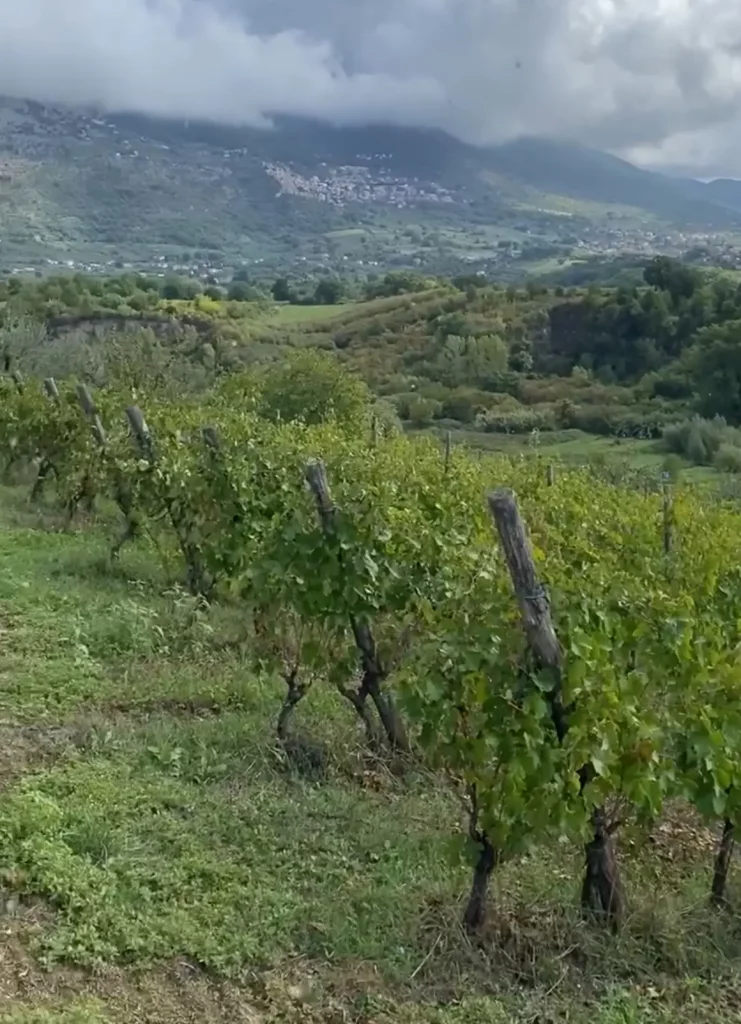
Cesanese vineyards on the hills of Olevano Romano
From tavern wine to ambassador of the territory
Until just a few decades ago Cesanese was a simple wine, often sweet or sparkling, drunk in taverns and at village festivals in the countryside between Olevano Romano, Piglio and Affile. Then everything changed. The turning point began in 2008 with the creation of the Consortium for the Protection of Cesanese del Piglio Docg (located in the province of Frosinone), which had transformed a peripheral territory into a laboratory of quality and promotion. Since then winemaking techniques have been refined, historic vineyards have been recovered, and the best plots have begun to produce grapes of the highest quality.
Cesanese emerged from anonymity and established itself as a red of elegance and depth. Today it is considered the symbolic wine of Lazio, capable of competing with the great Italian denominations, and its strength lies in its bond with the territory: volcanic hills, peculiar microclimates and a rooted agricultural tradition. Already in 1888 Camillo Mancini, in his volume Il Lazio Viticolo e Vinicolo, defined it as “the Pinot Noir of Lazio”, foreseeing its potential for finesse. The new consortium is therefore born to consolidate this identity, and the ministerial decree entrusts it with the task of protecting the PDO designation, monitoring quality and promoting the wine in Italy and abroad, telling its story and its bond with the landscape.
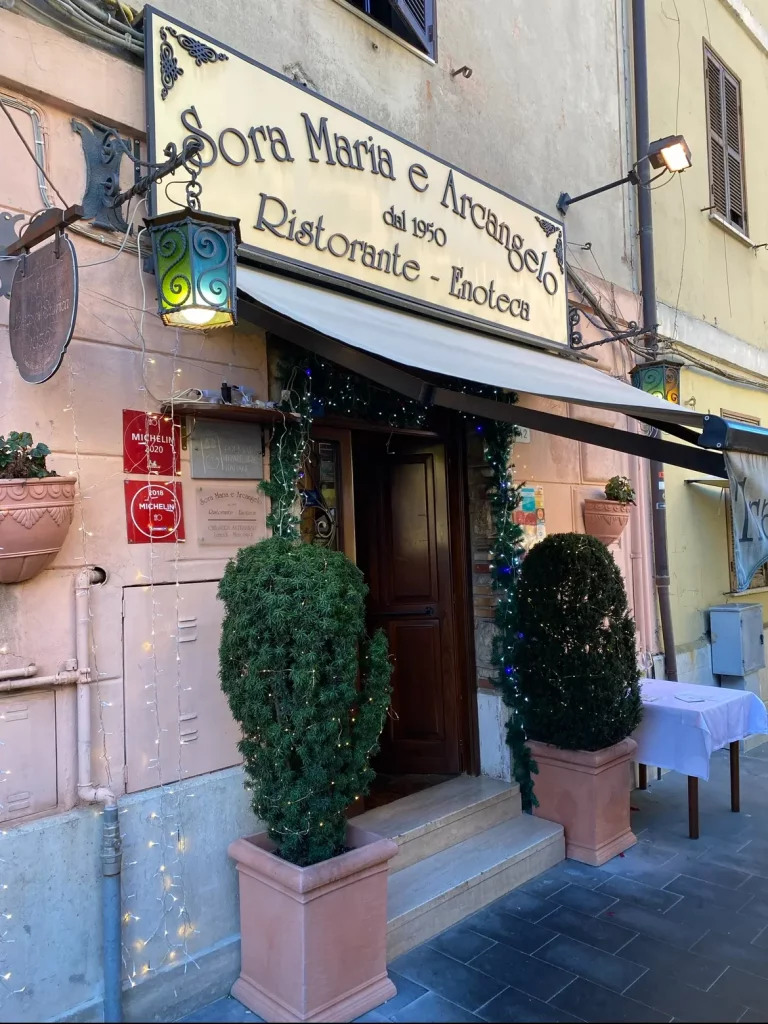
The legendary trattoria and wine bar Sora Maria e Arcangelo in Olevano Romano
Red in a land of whites
Today Cesanese is no longer just a wine: it has become a driving force for territorial transformation. The recovery of vineyards, the arrival of new generations of winegrowers and the development of wine tourism have reshaped the landscape and given new vitality to an area that had long remained on the margins of national wine circuits. For decades Lazio was identified almost exclusively with the whites of the Castelli Romani – such as Frascati, which became a denomination back in 1966 – but today the red of Olevano, Piglio and Affile tells another story: that of a territory that focuses on quality, authenticity and roots.
Relations with the Consortium of Cesanese del Piglio
The new consortium, however, will have to face some decisive challenges for the future of Cesanese. The first concerns the relationship with the Consortium of Cesanese del Piglio, with which it will be essential to build a constant and effective dialogue. Two organisations in such a restricted area could indeed represent a limitation, if they were to move in a misaligned way, but also a great opportunity if they manage to coordinate strategies, objectives and communication in order to present themselves united on the markets and in the promotion of the territory.
The challenges of the new body of protection
The second challenge is linked to the narrative of the wine itself. So far attention has focused mainly on the grape variety, but the future depends on the enhancement of the place: telling the story of the hills, villages and communities that have produced it for centuries, putting at the centre the profound link between landscape and material culture. It is precisely in this territorial dimension that the distinctive value of Cesanese lies, which – as Camillo Mancini already recalled in his monograph of 1866 – was also widely present in the municipalities of the Castelli Romani, before the region’s production history took other directions.
The birth of the Consortium for the Protection of Cesanese di Olevano Romano is therefore good news for all Italian wine. It marks the maturity of a territory that wants to tell its story through its landscape and traditions and that aspires to strengthen its oenological identity. Challenges are not lacking, but it is precisely through their management that the possibility passes of transforming Cesanese from the “Pinot Noir of Lazio” into one of Italy’s great red wines.

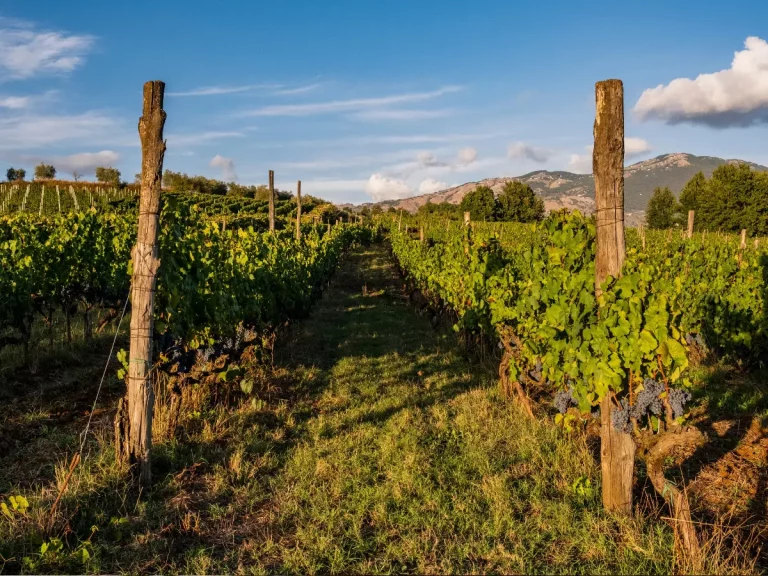
 The social media star resurrecting Italy's forgotten culinary classics
The social media star resurrecting Italy's forgotten culinary classics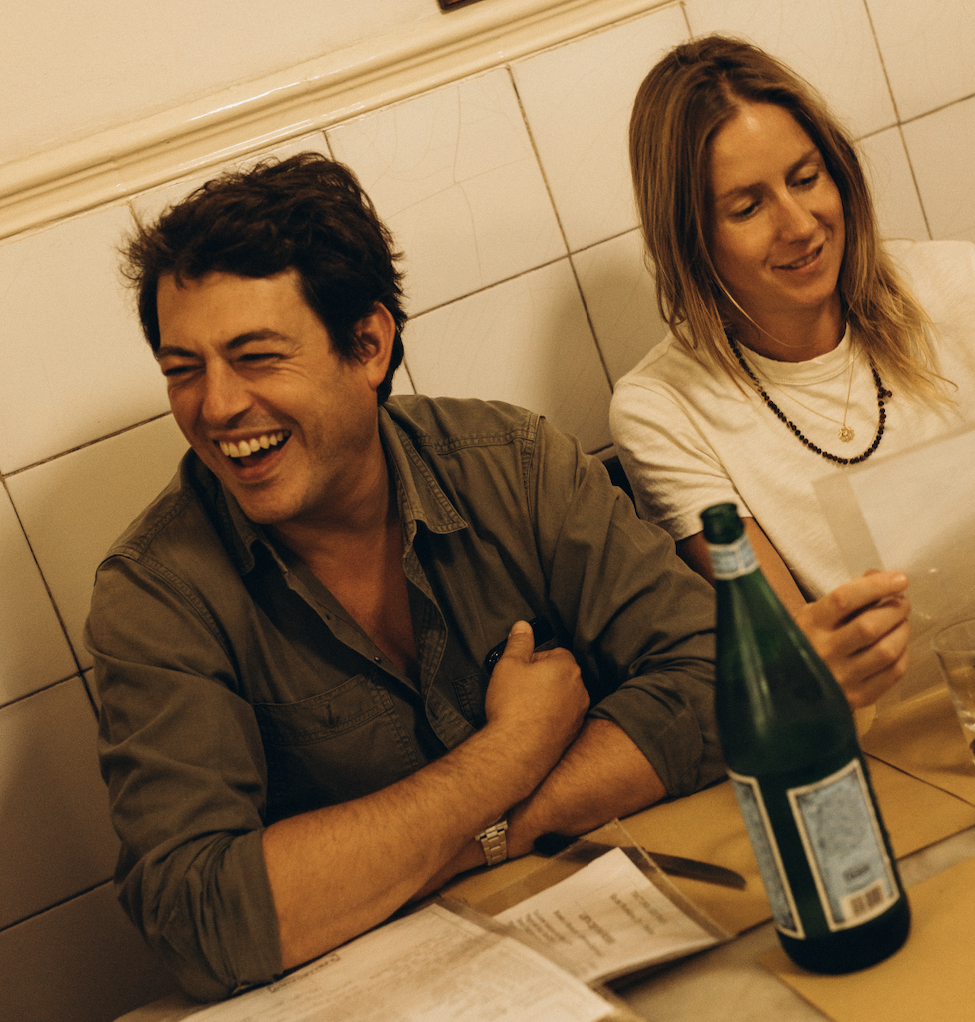 Giovanni Mazzei brings a taste of Florence to London
Giovanni Mazzei brings a taste of Florence to London Burgundy dominates but Italy is rising: a look at London's fine wine trends
Burgundy dominates but Italy is rising: a look at London's fine wine trends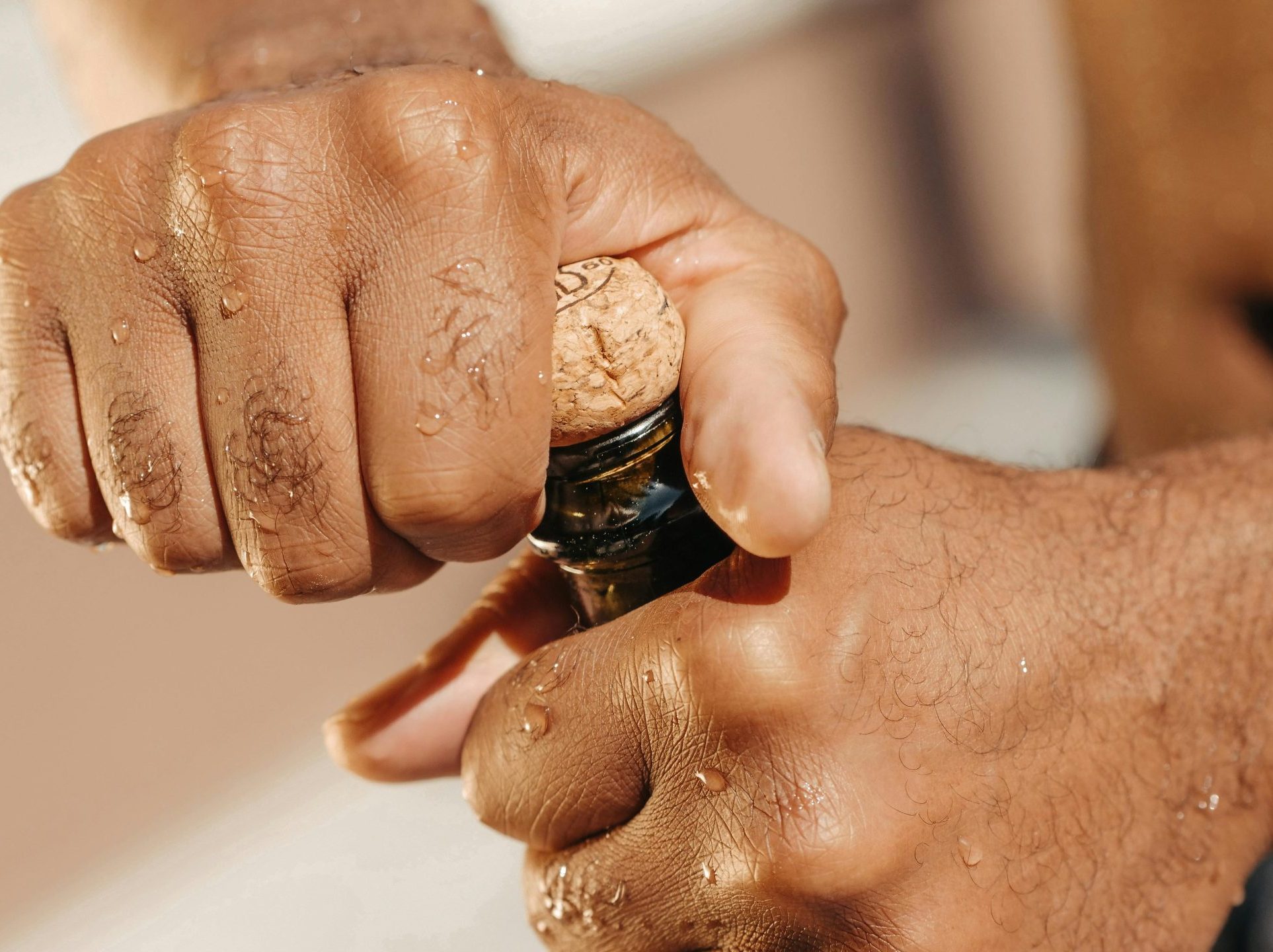 Costco Prosecco recalled over exploding bottle fears
Costco Prosecco recalled over exploding bottle fears The Consorzio Vino Chianti heads to Brazil: “An attentive public and a dynamic market”
The Consorzio Vino Chianti heads to Brazil: “An attentive public and a dynamic market”